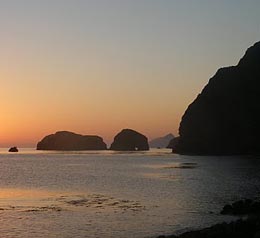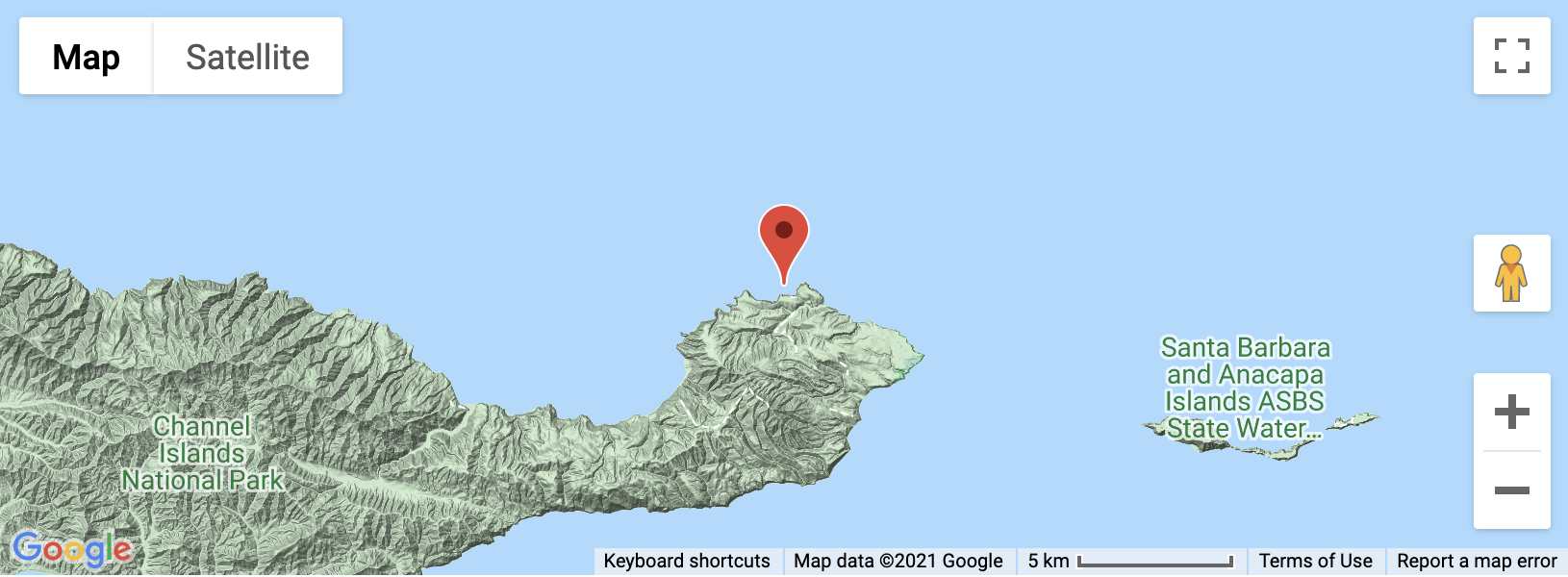The persistent force of wave action erodes cliffs into many interesting geologic formations. Sea caves, also known as littoral caves, are formed where a rock wall contains a zone of weakness. In the Channel Islands, caves are formed where faults in the basalts are exposed to the force of waves. Caves along faults tend to be very long, narrow and straight. The largest sea caves worldwide are formed in basalts that are resistant to erosion and, consequently, maintain their structure without collapsing for long periods. The Painted Cave on Santa Cruz Island (SCI) extends 374m into the cliff. Usually the biggest caves are in rougher areas, making them more difficult and dangerous to explore. Easily accessible caves tend to be in calmer water and are consequently smaller in size.
The driving force behind the formation of these caves is wave energy. Where faults or other zones of weakness are exposed, the rock is eroded by the waves' hydraulic force faster than the adjacent, structurally cohesive units. Once a cave starts to form, the force of the waves rushing into these fissures is large with respect to the small area over which this energy dissipated. The waves battering the fissures continue to erode the caves. In addition to the wave energy, the walls erode by the abrasive force of sandy and rock that is contained in the water. These rough particles act like sandpaper, eating away at cave walls.


As waves continue to batter sea cliffs and caves the walls will eventually succumb to the power of the ocean. When this happens, only the strongest, most structurally sound portions will remain standing. These structures may persist for long times as sea stacks or arches as the cliffs continue to erode away.

REFERENCES
Bunnell, d. 1983. Sea Caves of Santa Cruz Island, Santa Barbara, California: McNally and Loftin
Littoral Caves from Encyclopedia of Caves and Karst Science. ISBN: 0-203-48385-5. Published: 01-15-2004. 2009 Taylor and Francis. All rights reserved.
